"[Griffiths] wanted to do something very big. He was a man of the South from Kentucky. His father had fought for the Confederacy in the Civil War. What bigger story to tell as a breakout, epic film than the story of America's Civil War and its aftermath?" – Dick Lehr, author of The Birth of a Nation: How a Legendary Filmmaker and a Crusading Editor Reignited America's Civil War (NPR Staff 2015).
Lights, Camera, Action, Cut:
The Delayed Critique of D.W.Griffith's
The Birth of a Nation
Plot
D.W.Griffith's The Birth of a Nation focuses on the differing paths of two families, the Northern Stonemans and the Southern Camerons, during the American Civil War and subsequent period of Reconstruction. The material stems from Thomas Dixon’s 1905 book The Clansman: A Historical Romance of the Ku Klux Klan.
Filmed prologue to the re-release The Birth of a Nation (Griffith and Huston, 1930)
The two families start out as friends, with the Stoneman brothers visiting Ben Cameron on his cotton plantation. These scenes all show Black workers performing background tasks, such as farming cotton or working in the household. This first part of the movie is otherwise filled with humor (a father scratching his wig), romance (Ben Cameron is immediately infatuated with Elsie Stoneman), and even cute animals.
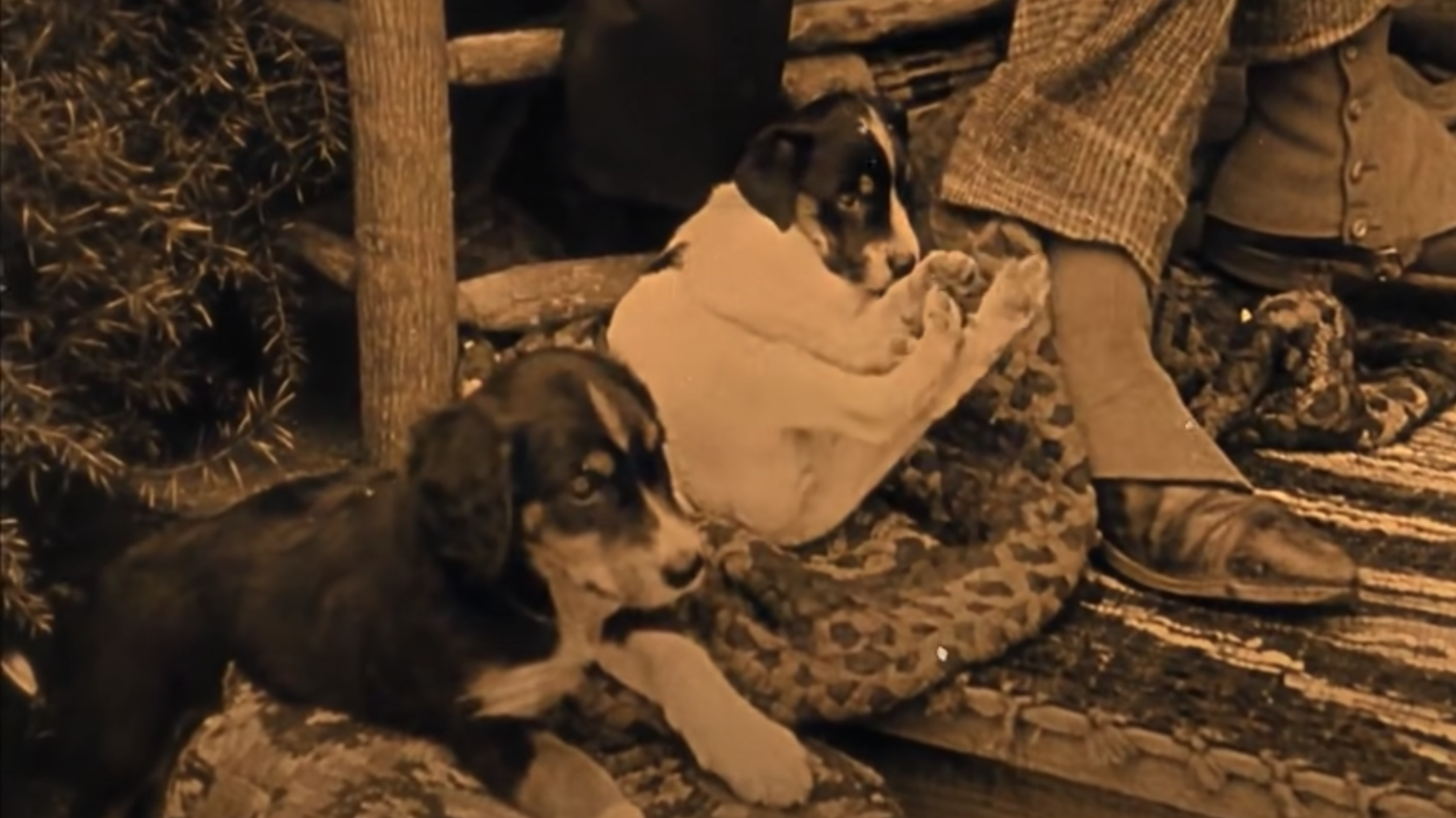
Close up shot of puppies (Griffith, 1915)
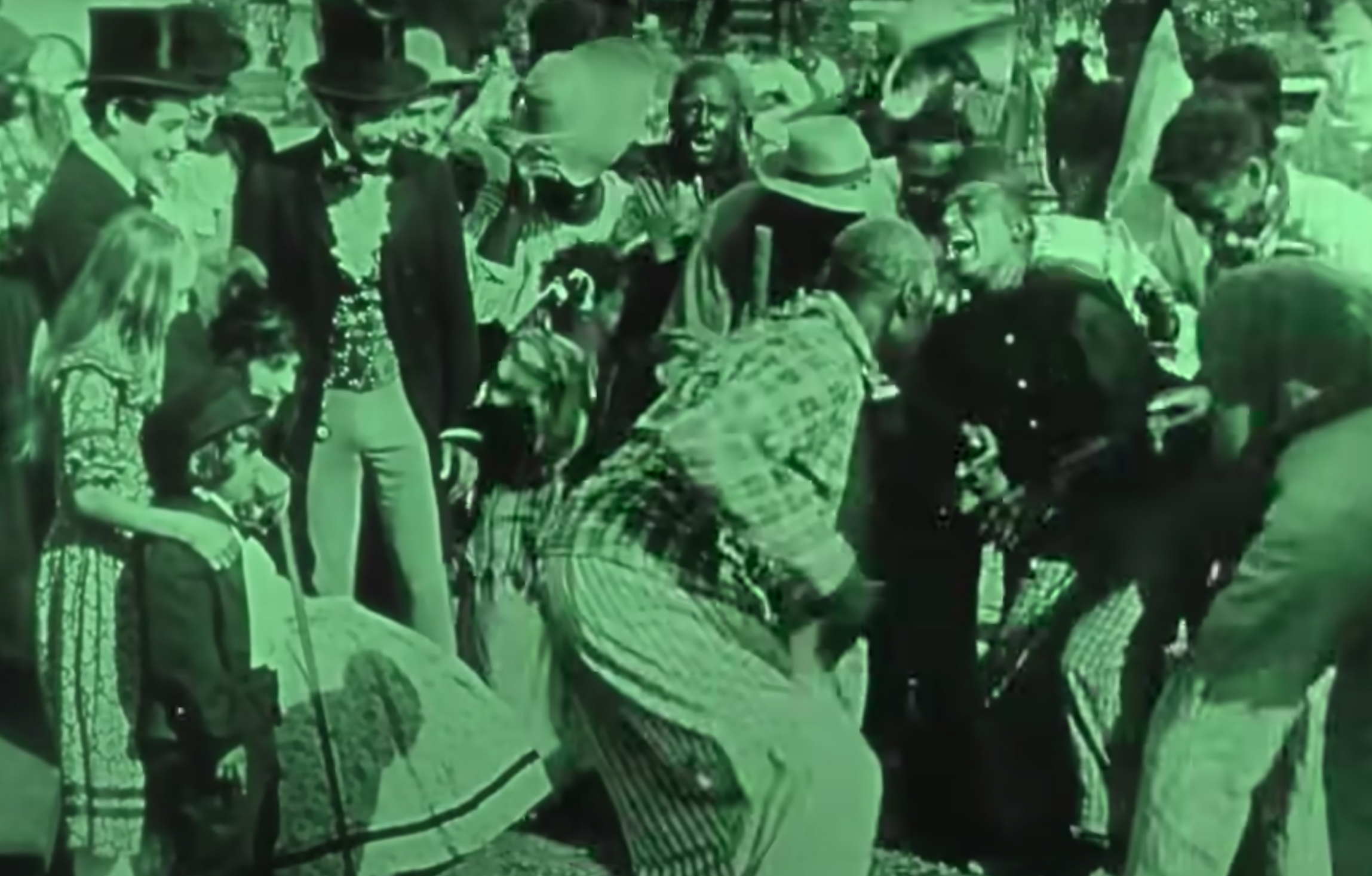
Black workers performing for White visitors
(Griffith, 1915).
The tone of the film changes once war commences and Griffith unequivocally favors the Southern version of events. He concentrates on the three years of battles that devastate the South, makes viewers weep when Ben Cameron’s soldier brothers die in each other’s arms, and generally paints Ben as a valiant war hero.
The latter half of the film is where the depiction of Blacks becomes problematic.
"[Griffith] portrayed the emancipated slaves as heathens, as unworthy of being free, as uncivilized, as primarily concerned with passing laws so they could marry white women and prey on them" (Lehr via NPR Staff, 2015).
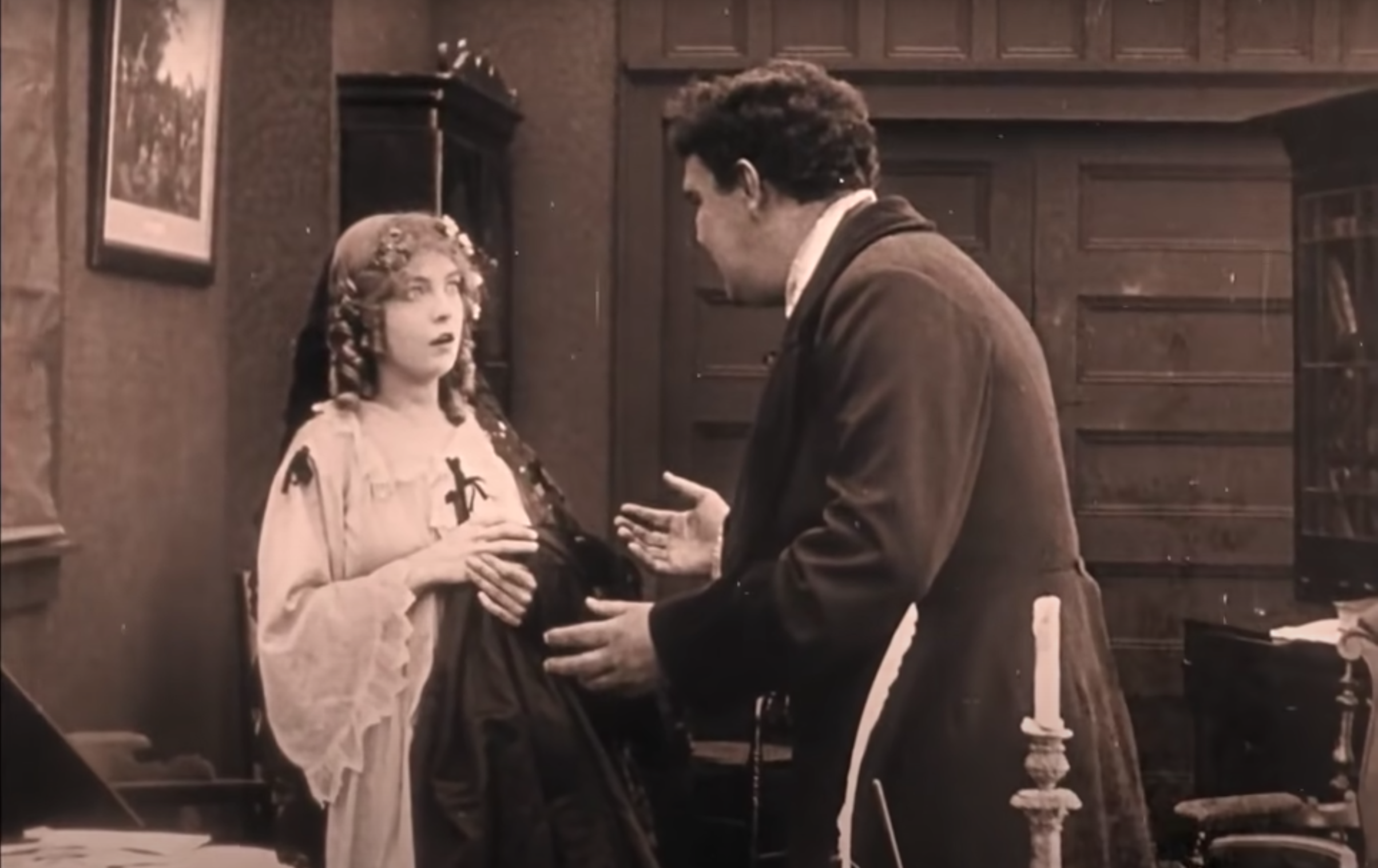
Lynch forcing Elsie upon marriage (Griffith, 1915)
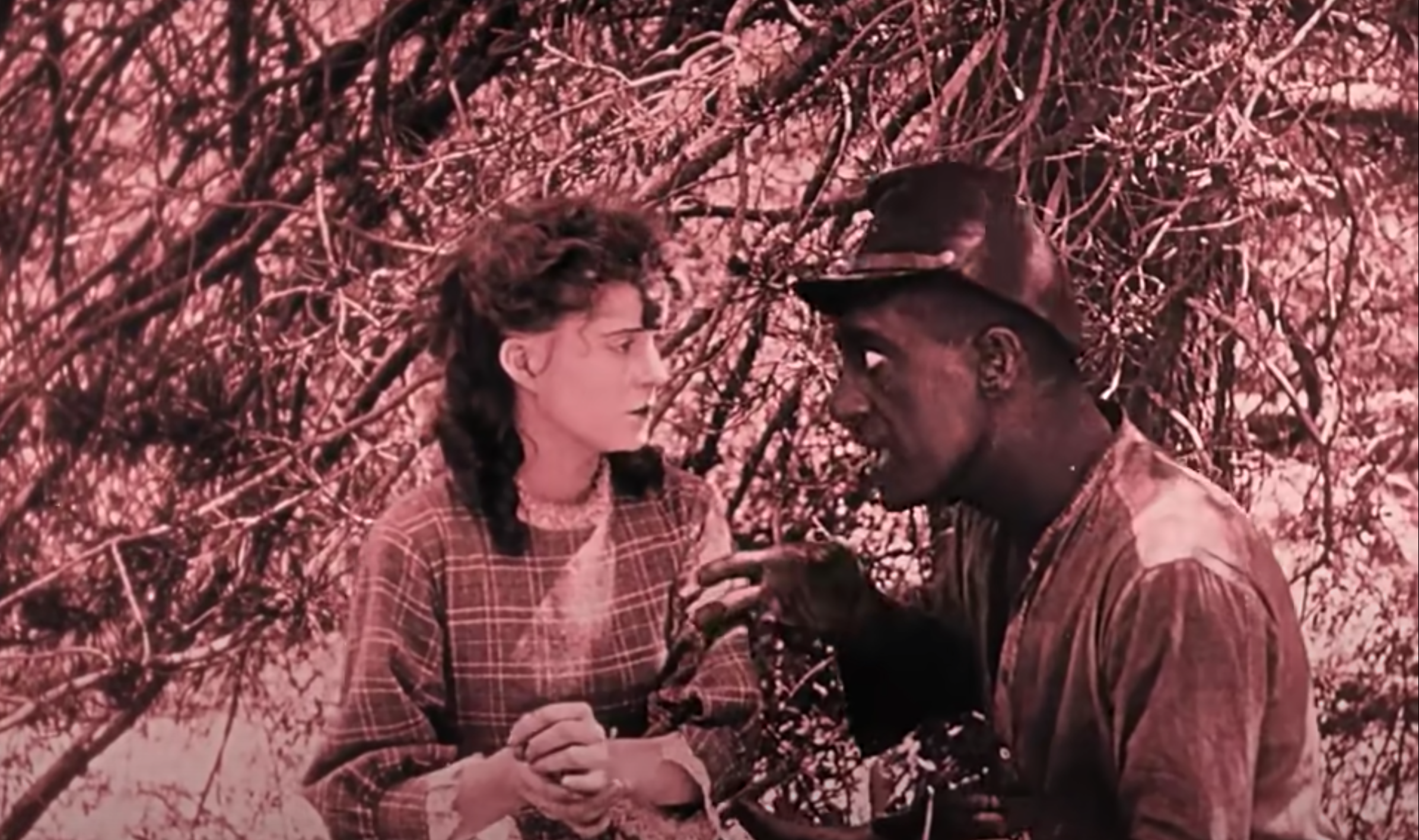
Black man forcing Flora into marriage (Griffith, 1915)
Black men barging into the Cameron's home (Griffith, 1915)
This is also when Griffith begins taking several liberties with historical accuracy. He suggests Reconstruction was a failure because African Americans were only interested in taking vengeance on whites. In order to combat this, Ben Cameron and the Southerners create the Ku Klax Klan, an organization whose main purpose is to terrorize Blacks and deny them their newfound rights. The film winds down with the KKK dramatically rescuing Elsie Stoneman from a Black militia, thereby glorifying the white supremacists.
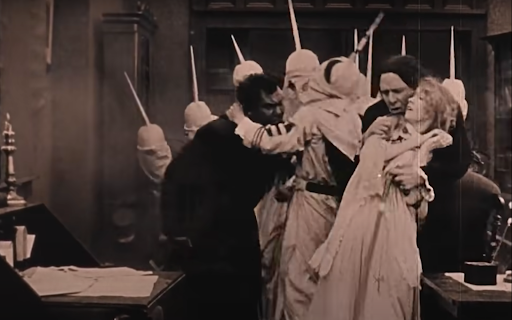
KKK saving Elsie from Lynch (Griffith, 1915)
“The real crime was not Griffith’s, but the world’s: the fact that most viewers knew little about slavery and little about Reconstruction and little about Jim Crow and little about the Klan, and were all too ready to swallow the very worst of the movie without question” (Brody, 2013).
Film-making